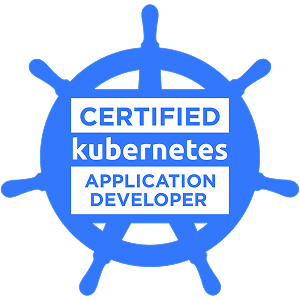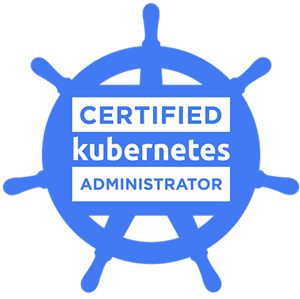DevOps Automation Solutions
Automation in DevOps plays a crucial role in achieving business goals. It allows your company to maximise its ROI and revenue.
In the article below, we’ll explain how it works and what makes it effective.
This page has been checked and edited by
Hleb Skuratau, CEO & CTO of T4itech
Authors: Hleb Skuratau, Eizaveta Sokolova

DevOps automation tools enable the automation of many repetitive tasks, such as building and testing code, deploying applications, and monitoring their performance. Moreover, automation allows teams to focus on more strategic and product development goals, ultimately leading to improved product quality and the growth of user experience. This is achieved through:
- Continuous Integration (CI)
- Continious Delivery (CD)
- Continuous Deployment (CD)
Benefits Of DevOps Automation For Your Business
1. A Comprehensive Economic Analysis
A comprehensive economic analysis is crucial for businesses that look to optimize their operations and maximize ROI.
Additionally, we can provide a comprehensive estimation to implement your business idea, leveraging the best engineering practices to ensure your vision is brought to life efficiently and effectively.
By integrating DevOps practices:
- Companies can better understand how automation impacts their bottom line.
- Allow them to make informed decisions that drive growth and efficiency.
- This analysis helps businesses align their DevOps strategies with broader economic goals, ensuring that investments in automation yield tangible benefits and competitive advantages.
2. Long-Term Cost Efficiency
Based on our experience and analysis, our solutions reduce maintenance expenses, providing long-term financial benefits. Once our DevOps automation tools are implemented, you can realize sustained benefits without incurring significant ongoing costs. We focus on creating resilient systems that reduce operational expenses over time.
Successful Cases:
- Reducing Kubernetes Node-Related Expenses: Achieved a 40% decrease in Kubernetes node-related cloud computing costs, demonstrating effective resource optimization.
- Lowering Cloud Compute Costs: We reduced cloud compute costs by 800 times per data set, substantially optimizing our clients' expenses.
These cases demonstrate the real results that can be achieved with our solutions.
3. Enhanced Operational Efficiency
Our solutions help streamline your operations by automating recurring tasks and enhancing cross-functional team productivity. This leads to faster time-to-market for new product features, allowing you to stay competitive in a rapidly changing market.
Cases of Operational Improvements:
- Accelerated Deployment Time: We reduced the time to deploy from 8 hours to just 15 minutes, significantly speeding up the delivery of new features and updates.
- Faster Lead Time for Changes: The lead time for changes was decreased from 3 days to only 1 hour, enabling quicker adaptation to market demands.
- Improved Recovery Time: The mean time to recovery (MTTR) was reduced from 2 days to 30 minutes, ensuring minimal downtime and maximizing system availability.
4. Improved Product Quality
We emphasize automated testing and monitoring in DevOps to ensure your software is thoroughly tested and monitored, reducing errors and improving quality.
Cases of Quality Enhancements:
- Rapid Deployment to Production: We achieved continuous deployment, moving from project start to going live in just two months, showcasing our ability to deliver high-quality software quickly.
- Frequent Releases: With our approach, we enable several releases per day, ensuring that updates and improvements are delivered rapidly and reliably, maintaining a high level of product quality.
These cases highlight how our focus on automated testing and monitoring enables the timely and efficient delivery of high-quality software products.
Technologies & Approaches We Use At DevOps
-
Infrastructure as Code (IaC)
-
(CI/CD/CD)
-
Containerization
-
Kubernetes
-
Serverless Architecture
-
AI & ML
-
DevSecOps
-
Monitoring and Logging Tools
-
GitOps
-
Cloud-Native Technologies
-
Edge Computing
-
FinOps
-
Infrastructure as Code (IaC)
-
(CI/CD/CD)
-
Containerization
-
Kubernetes
-
Serverless Architecture
-
AI & ML
-
DevSecOps
-
Monitoring and Logging Tools
-
GitOps
-
Cloud-Native Technologies
-
Edge Computing
-
FinOps
CERTIFICATIONS
Cloud technology:
- AZ-305: Azure Solutions Architect - Expert
- AWS Certified Solutions Architect - Associate
- AWS Certified Solutions Architect - Professional
- Google Cloud - Professional - Cloud Architect




Kubernetes:
- Certified Kubernetes Administrator (CKA)
- Certified Kubernetes Application Developer (CKAD)
- Certified Kubernetes Security Specialist (CKS)



Cybersecurity:
- Offensive Security Certified Professional (OSCP)

Our Technology Stack
CI/CD
Containers
Automation & IaC
![]() Terraform
Terraform![]() Ansible
Ansible![]() CloudFormation
CloudFormation![]() Chef
Chef![]() Puppet
Puppet
Monitoring
Cloud Platforms
Collaboration
![]() GitHub
GitHub![]() GitLab
GitLab![]() Bitbucket
Bitbucket![]() Slack
Slack![]() Jira
Jira
Security
![]() SonarQube
SonarQube![]() Checkmarx
Checkmarx![]() Snyk
Snyk
Conversation
![]() Teams
Teams![]() Telegram
Telegram![]() Discord
Discord![]() WhatsApp
WhatsApp
Our Services
Infrastructure as Code (IaC) Solutions
Configuration Management Automation
Automated Testing in DevOps
Continuous Integration Tools
DevOps Monitoring Tools
How It Works
Strategy Development
We create a customised business transformation strategy, considering your goals and available resources.
A transformation strategy includes:
- a comprehensive technology assessment to determine your business needs
- optimal tools and platforms.
We also define clear implementation stages, ensuring a structured and manageable strategy process. Additionally, we establish key performance indicators (KPIs) to measure progress and success, allowing for continuous monitoring and adjustment of the strategy as needed.
Tool Implementation
We implement and configure critical DevOps automation tools, such as continuous integration/continuous deployment/delivery (CI/CD) pipelines and real-time monitoring systems.
Our experts ensure that these tools are fully integrated with your current systems, providing a unified and optimized operational environment that supports faster time-to-market and reduced operational risks.

Infrastructure and DevOps Audit
We analyze the current state of your infrastructure, processes, and identify critical areas that require immediate attention and strategic intervention. This allows us to understand where automation can be applicable and which tools will be more suitable.
Benefits of DevOps Automation
Implementing DevOps and automation can bring numerous benefits to your business:
Accelerated Development
Automation speeds up the development process, allowing companies to respond quickly to market changes and customer needs.
Improved Quality
Automated testing and monitoring enable early detection and correction of errors, enhancing overall product quality.
Cost Reduction
Automation reduces costs associated with manual processes, minimizes the risk of errors, and leads to resource savings.
Conclusion
DevOps Automation Services and DevOps Workflow Automation are integral to our offerings. They allow businesses to optimize operations, improve efficiency, and accelerate time to market (TTM).
Our DevOps Automation Platform is designed to create, do, and help your business and support you in achieving your goals through Automation DevOps Tools and DevOps and Automation best practices. By leveraging these solutions, you can ease your business operations and stay ahead in the competitive market.
Frequently Asked Questions
Have Question? We are here to help
What is DevOps Automation (software reliability engineering - SRE)?
DevOps Automation refers to the process of automating repetitive tasks and workflows in software development and IT operations, such as environment provisioning, configuration management, CI/CD pipelines, testing, monitoring, and deployments. It enhances productivity, reduces human error, and accelerates the software development lifecycle.
Why is automation essential in DevOps?
Automation is critical to DevOps as it streamlines processes, reduces lead times for changes, improves software quality, enables continuous integration and delivery. It also allows teams to focus on strategic tasks instead of manual operations.
Can automation improve software quality?
Continuous deployment allows us to omit release boards or a release manager. IaC ensures consistent production environments.
How does Infrastructure-as-Code (IaC) contribute to automation?
IaC allows teams to manage infrastructure using code rather than manual processes. Tools like Terraform/OpenTofu automate resource provisioning, modification, and cleanup across multiple cloud providers.
What are common tools used for DevOps Automation?
-
VCS and Build engines
-
Terraform: Infrastructure-as-Code (IaC) for provisioning resources.
-
Ansible/Puppet/Chef/Packer: Configuration management.
-
Helm/Docker/Kubernetes: Containerization and orchestration
-
Autoscaling and PaaS hosting platform
CONTACT US



